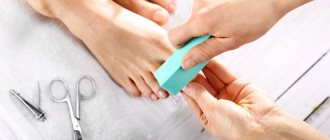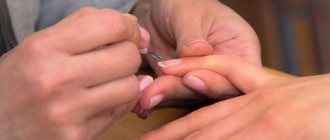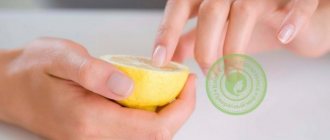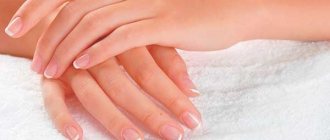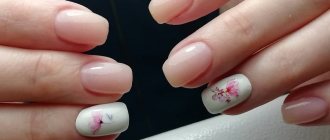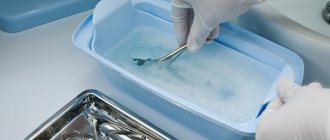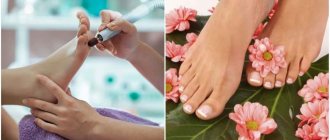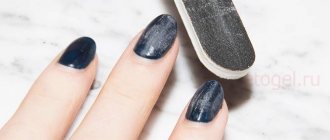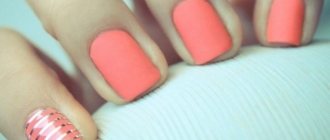Beautiful, well-groomed legs give confidence and make you feel comfortable. And not only in summer. Pedicures at home help maintain healthy feet all year round.
How to do it correctly? What technology do professionals use? Do I need to use a pedicure machine at home and which one should I choose? , an expert on nail health, podiatrist, and owner of one of the nail service salons in the Wax&Nails chain, answered these questions to the FAN .
Pedicure appointment
Pedicure is a foot care technique that helps keep them healthy. The purpose of the procedure is often misrepresented. Many women believe that pedicures should be limited to just painting the nails, but this is not true.
The master faces not only aesthetic tasks, although they are certainly important. The procedure should solve several issues at once:
- removal of rough, keratinized skin;
- protection of feet from cracks and wounds;
- control of the occurrence of calluses and corns, their timely removal;
- control nail growth and prevent ingrown nails.
As foot problems develop, painful and uncomfortable sensations arise. Cracked heels cause pain when walking, and their healing takes a very long time, since the damaged area is under constant pressure. Ingrown nails are no less painful, often resulting in inflammatory processes and the development of suppuration. With such problems, people turn to podologists - specialists in medical pedicure, and in especially advanced cases - to surgeons.
But if you regularly and correctly do pedicures at home, these problems can be avoided. And the beauty of your nails, their spectacular or original design will be the right addition to the health of your feet.
How often to get a pedicure
Another misconception is that the procedure should only be done in the summer. And in winter you can “save” on it, since no one can see your legs anyway. According to Anna Shevchuk, this opinion can result in serious health problems.
“Pedicures should be done at any time of the year,” the expert clarifies. — On our feet, regardless of whether we walk barefoot or in closed shoes, a stratum corneum constantly appears. And it must be removed regularly. If this is not done, corns will appear. And they will begin to crack and cause pain. This usually happens in the summer when we wear open shoes. But in winter the problem is no less pressing. Due to the operation of the heating system, the air in the rooms becomes dry and the skin dries out intensely. Therefore, cracks in the heels often appear in winter, with the beginning of the heating season. And a pedicure will help prevent their occurrence.”
The recommended frequency of performing the procedure is once every 28 days. In some cases it may be required more often. For example, in people with metabolic diseases, the intensity of the appearance of rough skin is higher, and pedicures must be performed every three weeks.
The expert recommends that people suffering from diabetes mellitus take more care of their feet. Due to the peculiarities of metabolic processes and circulatory disorders in this disease, the legs are especially susceptible to wounds and injuries. Those who are overweight also need to pay attention to their legs. Excessive pressure on the feet creates areas of intense roughening of the skin. And in these areas the risk of cracks increases.
Regularity is also determined by the rate of nail growth, which does not always coincide with the formation of the stratum corneum on the heels. Nails grow faster in summer, but in winter their growth rate slows down. Therefore, you can contact the master a little less often. But low-quality shoes or models that do not fit in size or instep height can cause not only discomfort when walking, but also lead to impaired foot health.
“In the absence of good shoes, your feet seriously suffer,” explains Anna Shevchuk. - Painful calluses form. And it is impossible to cope with them at home on your own. You just need to go to the salon, to a master podiatrist.”
If you make regular foot care a daily habit, the frequency of visits to a professional can be reduced. Home treatments will help maintain healthy feet, their beauty and well-groomed appearance.
Homemade foot baths: how to steam your feet quickly at home?
Every woman dreams of beautiful and soft heels, but achieving the skin on them that looks like a baby’s can be quite difficult. To ensure that your heels are always in decent shape, the fair sex needs to know how to steam your feet at home correctly. There are many effective ways to steam your legs, so every lady can choose the one that she likes most.
In order for your heels to always look beautiful, you need to take care of them not only in the summer, when it is customary to wear open shoes, but throughout the year. Cosmetic procedures in beauty salons will help make the skin of your feet perfectly soft and smooth, but they are expensive and not every girl can afford them. But there is no need to despair, since you can become the owner of beautiful heels at home.
To do this, you need to follow the basic rules for caring for your feet, the central place among which is occupied by softening foot baths. They will allow you to quickly steam problem areas (corns, rough skin), after which they can be easily removed using a pumice stone, a metal foot grater or a brush with stiff bristles. You cannot use a razor as a tool for cleaning heels, as sharp blades can injure the skin and create serious problems for a woman. After finishing the bath, it is recommended to wipe your feet dry with a towel and apply foot cream with softening ingredients using massaging movements. If you repeat this procedure once a week, women's heels will always look perfect.
How to steam your legs at home correctly? To do this, you need to use special foot baths, which contain ingredients that soften the rough skin of the feet. There are many options for preparing baths, and in most cases their active ingredients are products accessible to any woman. Before starting a cosmetic procedure, the fairer sex will need to prepare:
- a comfortable basin in which you can easily place your legs up to the ankles;
— tools for removing rough skin (pumice stone, grater, brush);
- dry towel;
— softening foot cream;
- clean cotton socks.
The most popular way to steam the keratinized skin of the feet is a soda bath; our mothers and grandmothers used it to tidy up their feet. To prepare a foot bath, you need to mix 3 liters of hot water (39-41°C) with 2 tablespoons of regular baking soda (sodium bicarbonate) in a prepared basin. To steam out corns and rough skin on the heels, immerse the feet in prepared water for 15 minutes, after which they begin to treat problem areas with a pumice stone, grater or brush. Soda perfectly steams the skin and its roughened areas will be easily removed under mechanical influence. You should not keep your feet in soda water for more than a quarter of an hour, as sodium bicarbonate can corrode the skin with prolonged contact with the skin. If your heels are in a state of disrepair, it will not be possible to completely clear them of rough areas in one procedure. To do this, you will need 4-7 soda baths, which must be repeated after 1-2 days. When the heels acquire a well-groomed appearance, it will be enough for prevention to do the described procedure once a week. After the bath, the feet are lubricated with cream, after which cotton socks are put on them for several hours (preferably overnight).
If a woman has to walk a lot of time and by the evening her legs are buzzing from fatigue, she can add 3-5 drops of mint or eucalyptus essential oil to a soda bath. In this case, in addition to deep steaming, it will also receive a relaxing effect.
A bath containing hydrogen peroxide will help to steam the rough skin on the feet. To prepare it, you will need 2 liters of well-heated water (about 45°C) mixed with 60 ml of peroxide. The feet must be kept in the resulting bath for at least half an hour. To prevent the liquid from cooling down, it is recommended to periodically add hot water to the basin. In 30 minutes, the keratinized areas on the feet will soften sufficiently and they can be removed with a pumice stone or a heel grater. To ensure that your feet always remain well-groomed, a bath with hydrogen peroxide should be done weekly.
If the rough skin on the heel is cracked, then baths with various herbs will help make the skin soft and heal the wound. Most medicinal plants have a beneficial effect on the skin, help restore damage to its surface and have disinfectant properties. To steam your feet and speed up the healing of cracked heels, it is recommended to prepare a hot bath with chamomile and nettle infusions, a small amount of pine extract and a few drops of tea tree essential oil.
Herbal decoctions are prepared in the manner described on the package and added to the bath in equal proportions. Keep your feet in this bath for about 20 minutes, after which you can begin to remove the stratum corneum. If there are cracks, the procedure should be repeated daily until they are completely healed. If there is no damage, then it is recommended to do such baths 2 times a week as a steaming agent: after their use, the skin on the legs will become as soft as that of a small child. Instead of chamomile and nettle, you can use calendula, St. John's wort, and thyme - they soften and refresh the skin of the feet. If a woman suffers from sweaty feet, then she can pour a decoction of oak bark into herbal-based steam baths.
Potato decoction, which must be added to hot water in a 1:1 ratio, perfectly softens heels. The feet should be kept in the potato bath for 20 minutes, after which you can begin to cleanse the rough areas of the skin.
Ugly skin on the heels will cease to be a problem if a woman begins to regularly pamper her feet with milk baths. For them, you will need to mix 3 liters of hot water with a glass of milk, 3 tablespoons of salt and 50 grams of grated laundry soap in a basin. The legs are immersed in the resulting composition for half an hour. After the specified time has elapsed, the skin of the heels is ready for treatment with a pumice stone or grater. By repeating this procedure 1-2 times a week, you can permanently solve the problem with the rough surface of the feet.
Steaming your feet with baths is not possible for everyone and not always. Considering that to soften the skin it is necessary to keep your feet in hot water, the procedure is contraindicated for people suffering from varicose veins and swelling. It is worth holding off on steam baths if you have elevated body temperature, menstruation, or open wounds or ulcers on the surface of your feet.
When making steam baths, it is important to remember the main rules: you do not need to vigorously rub your heels with a grater or pumice stone after finishing them, as these actions can injure the skin. The rough areas must be removed gradually, layer by layer, so procedures for cleansing the legs must be carried out regularly. And don’t forget to moisturize your heels with foot cream after each bath, thanks to which they will become even softer and more tender.
As you can see, steaming your feet at home to give your heels a well-groomed look is quite easy. To do this, you need to make cosmetic baths that will soften the rough skin of the feet, and then treat the problem areas with a pumice stone or a metal grater. These simple tips will allow a woman to become the owner of tender heels without visiting a beauty salon.
Pedicure at home step by step for beginners
If you've never done a pedicure yourself before, follow this beginner's technique as a guide.
- Estimate the length of your nails. Despite the fact that when performing a pedicure, it is customary to soak the feet, nail treatment should be done “dry”. This way they can be carefully trimmed and given the required shape. If varnish is applied to the nails, it must first be removed and only then processed.
- Trim your nails. To do this, use wire cutters. You need to “bite off” your nails in two or three approaches, under no circumstances trying to remove the entire length in one cut. In this case, the nail may bend in the opposite direction and crack in the center. If this happens, it will look damaged, sloppy, and cause discomfort. The shape of the cut also matters.
“Never round your toenails,” advises Anna Shevchuk. “This leads to the fact that the nails begin to grow incorrectly and grow into the skin. This happens especially often in people with high fingertips. Ingrown nails are painful and can result in inflammation and bleeding. To avoid this, cut your nail only in a straight line. And then lightly file around the edges, giving it a soft square shape.”
- Soak your feet. To do this, pour warm water into a basin or bath. You can add bath salts or pebbles there, and then steaming will turn into a particularly pleasant procedure with a light massage. Choose the steaming time depending on the condition of your feet. If you haven't worked out your legs in a while, increase the duration to 10-15 minutes. During this time, the stratum corneum will soften, loosen, and can be easily removed with a file. If you regularly treat your feet, five to seven minutes in warm water will be enough to prepare your feet for further care.
- Treat heels and rough areas with a file. Use double-sided with varying degrees of abrasiveness. First, use a rough grater to remove most of the stratum corneum. And then sand the treated areas with soft sanding.
- Treat the cuticle. Gently push it away with a wooden stick and remove excess with nail scissors and tongs.
“Working with the cuticle largely distinguishes a home pedicure from a professional one in a salon,” explains Anna Shevchuk. — The cuticle on the legs is thin, it is easy to damage it and cause injury to yourself. Not every woman, especially older women, is able to bend or raise her leg so that it is convenient to work with the cuticle. You need to have a clear view of the treated area. Otherwise, the legs will look sloppy, and after the procedure there will be unpleasant, painful sensations.”
How to give yourself a pedicure without mistakes
Here are some more professional tips from a podiatrist for performing an at-home pedicure.
- Do not use the device. Working with it requires skills, and if you try to treat a foot or nail without experience and understanding of the technique, you can injure yourself. Hardware pedicure is performed with metal cutters that rotate quickly. You need to control the rotation speed and pressing force. Inaccurate movement of the cutter can damage the integrity of the nail plate, undermining its side part or “root”. And then it will take several months to restore the damaged nail.
- Don't try to remove more. If you haven't worked on your heels for a long time, the first pedicure after a break should be gentle. Go through the file lightly, removing only the very top rough layer. Don't try to scrape away dead tissue with a razor blade or scrub too hard to get baby's pink heels. The fact is that the skin of the feet gets used to certain conditions. If it is covered with “coarsened armor” for a long time, it becomes thin and delicate. And if this “armor” is peeled off at one point, the skin will definitely burst. And you will have to suffer from a painful crack for several weeks. Remove the stratum corneum gradually, over two or three procedures. This way you will accustom your legs to new “conditions” and will not get unpleasant consequences.
- Assess the condition of your feet correctly. Some people have naturally thick nail plates. It often thickens with age, and cutting off the tip of a dry nail with nail clippers becomes almost impossible. In this case, the legs need to be soaked first, and only then work with the nails.
- Don't cut your nails too short. As a rule, low cutting of the nail plate leads to its ingrowth and the appearance of foci of inflammation at the junction with the fingertips. As much as you'd like to return to pedicures as rarely as possible, leave a small nail tip on each toe. One or two millimeters will be enough.
If you do not have problems with your feet, regular care treatments at home will help you maintain their beauty and health. But if you have calluses, corns form quickly, or painful cracks appear, you cannot do without professional care. In this case, you need to contact a professional as needed, and between visits to the salon, take care of your legs at home yourself.
How to do a pedicure yourself at home. Foot baths
So, if you are planning to do a pedicure at home, prepare your feet thoroughly. Fill the basin with hot water. Grate the toilet soap on a fine grater and pour into a basin. You can add liquid soap, shower gel, lemon juice, foot bath tablets or sea salt. A little baking soda and ammonia will perfectly soften the nails and skin on the toes. You can add vegetable or olive oil to the water, use herbal or pine baths, but one way or another, your feet must be thoroughly steamed before starting the main procedure. To keep the water temperature the same, add hot water to the basin from time to time. As soon as you feel that the skin on your legs has steamed properly, you can start treating it. Determining the condition of the skin is quite simple - it should become soft and pale pink. Rub your heels and soles with a piece of fine-grained pumice or a special soft foot brush in a circular motion. You can use a special cleansing foot peel to remove dead skin particles. Foot peeling can be replaced with a regular scrub or improvised means (calcined sand, sea salt, semolina with olive oil). After sanding your feet, rinse them with water. After 20-30 minutes, you can proceed directly to the pedicure.
Using a special spatula from the manicure set, carefully push back the cuticle at the base of the nail so that the nails can “breathe” freely. The skin ridge surrounding the nail sometimes grows to almost half the nail. This not only looks unsightly, but is also unhygienic, so if you want your nails to look beautiful, push back your nail cuticles. The skin at the base of the nail will grow more slowly if, immediately after the foot bath, you gently push it away with the edge of a terry towel. It is believed that cutting the cuticle around the fingers should not be done, as this can lead to skin inflammation.
Take tweezers or scissors and trim your nails into a beautiful shape.
Trim your thumbnail only in a straight line to prevent it from growing into your finger. An ingrown toenail is a very unpleasant thing, it causes inconvenience and pain when walking, and not everyone, even an experienced pedicurist, can remove this rather serious cosmetic defect. The nail on the big toe should not be cut too short - it should protect the edge of the toe from friction with the shoe, thus preventing the formation of calluses. Trim very thick and hard toenails after steaming for 10 minutes, but do not increase the duration of this procedure, as this is very harmful to the nails. In order to trim your toenails correctly, in a straight line, remove the corners of the nail with special nail clippers after steaming. Read more. Pedicure at home. Ingrown nail. Corns Other articles in the section “Pedicure, foot treatment” Return to the beginning of the section Body care Return to the beginning of the section Beauty and Health
Proper home care
“You need to take care of your feet at home,” comments Anna Shevchuk. - Both in winter and in summer, the skin dries quickly, and therefore can become rougher and thicker. You shouldn't wait until your feet become rough and overgrown and only then go to the salon. If you maintain their condition at home, your legs will be neat and painful sensations will not arise.”
The expert advises cleaning your feet with a foot file twice a week. It is better to do this after a shower or bath, when the skin is steamed and the stratum corneum is easily removed. First you need to rub the legs with the hard side of the grater, and then use the soft side. After this treatment, there will be no rough areas left, and the heels will become smooth and soft.
Then you need to apply a moisturizing or nourishing cream. This type of care should be performed all year round. You can use either a regular file or an electric one, which helps keep your heels in perfect condition between professional pedicures. But you don’t have to rely on newfangled devices. An ordinary foot grater copes with this task no worse, and costs several times less.
Nail care
It is recommended to trim your nails every 2 weeks. This is necessary not only for the nails themselves, to protect them from unwanted infections and ingrowth, but also for the skin around them. Moreover, to care for your toenails, you need to use separate scissors; you need to trim your nails after a shower, when they become much softer. You should not cut your nails very short, as this can cause pain and discomfort when walking. Everyone needs to use a file to smooth out unevenness - both women and men. It is important to learn how to trim your nails correctly. It is strictly forbidden to cut the corners of the nail at the edges - this is the main cause of ingrown nails. The cuticle needs to be lubricated with softening oil, and then carefully moved to the base using a special pusher.
Self-examination
Any disease is easier to treat in its early stages, so regular foot examinations are very important, especially for people with diabetes. In this case, it is recommended to visit a podologist and podiatrist 2-4 times a year. The first thing you need to make sure is that there is no fungal or any other infection. And if cuts and scratches appear on your legs, you need to treat them carefully. If ulcers or scratches appear on your legs that do not go away for a long time, this is a reason to seek help from a doctor. For diabetics, this is a particularly alarming symptom indicating diabetic foot syndrome. Patients suffering from diabetes need to be attentive to any painful sensations in the legs and the appearance of spots, sores and bruises on the legs.
Foot massage
Foot care at home also includes massage, because it is not only very pleasant, but also useful for maintaining healthy feet. It is known that the foot contains a large number of nerve endings and reflex zones, and the impact on them stimulates the functioning of the whole organism. Gentle pressure on the legs will help normalize blood circulation, relax after a hard day, even relieve pain and relieve swelling. You need to massage your feet every day before going to bed. For this procedure, coconut or olive oil is suitable, which must be preheated. By the way, massage can be carried out not only with your hands, but, for example, with the help of mats, rollers, balls, etc.
Foot spa and hyperhidrosis
Home may not seem like the best beauty salon, but that's no reason to skip foot baths.
They allow you to get rid of impurities, relieve fatigue and tension. Adding sea salt and a couple of drops of aromatic oil to the water will soften and moisturize the skin of your feet. After this relaxation, the feet need to be treated with pumice. A large number of sweat glands are concentrated in the feet, and excessive sweating creates an ideal environment for the growth of bacteria, and this is the main cause of unpleasant odor and the development of infections. Washing your feet and changing your socks every day will help you avoid unpleasant problems. It is also important to properly care for your shoes - they should always be kept clean. In pharmacies you can find a wide variety of products that will help control hyperhidrosis and get rid of unpleasant odor. Text: Yulia Lapushkina.

